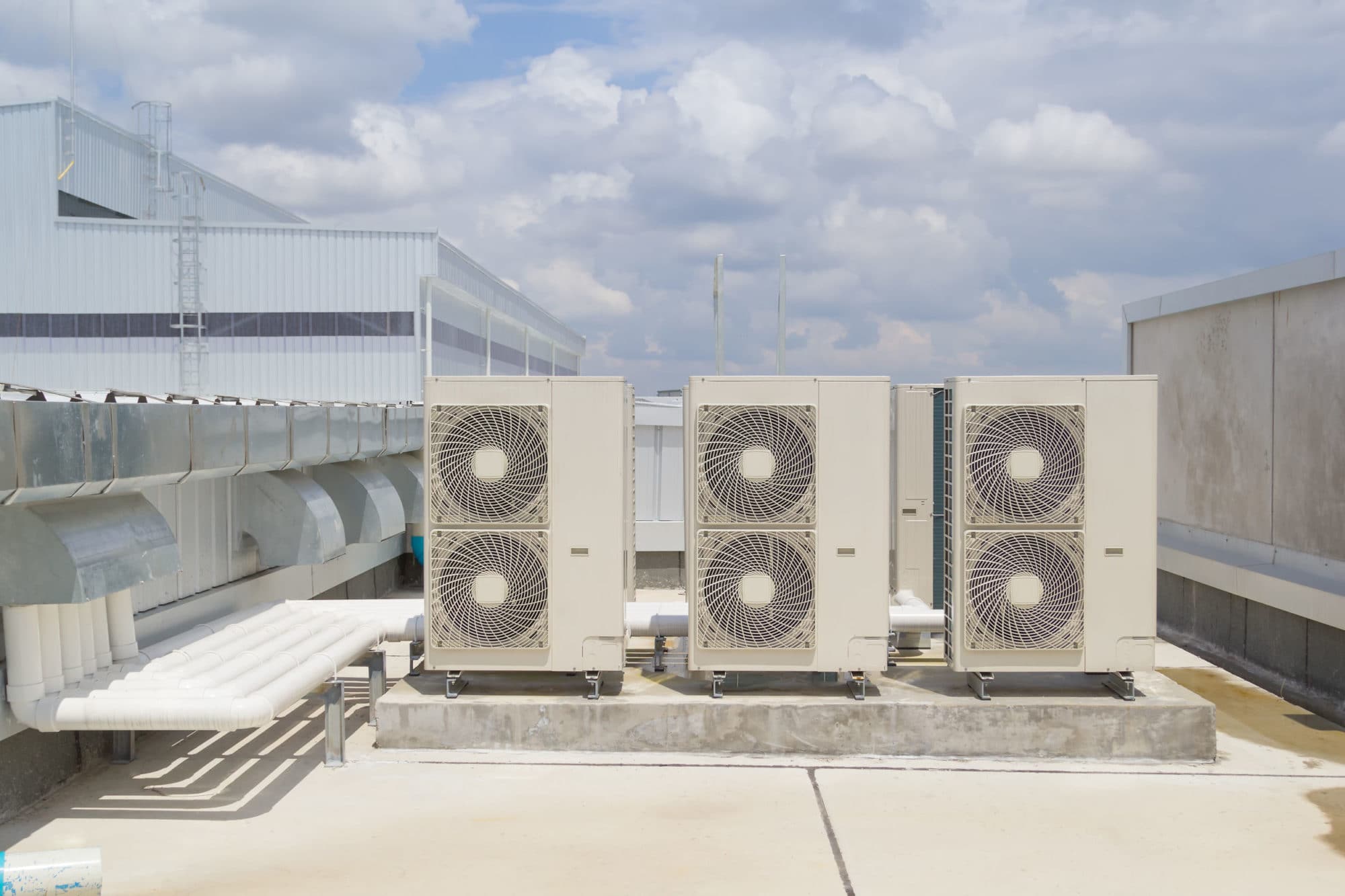Home>diy>Building & Construction>How To Reduce Carbon Footprint In Construction


Building & Construction
How To Reduce Carbon Footprint In Construction
Modified: December 7, 2023
Learn practical tips and strategies to reduce carbon footprint in building construction. Make a positive impact on the environment with sustainable construction practices.
(Many of the links in this article redirect to a specific reviewed product. Your purchase of these products through affiliate links helps to generate commission for Storables.com, at no extra cost. Learn more)
Introduction
The construction industry plays a vital role in shaping our built environment, but it is also responsible for significant environmental impact. From carbon emissions to resource depletion, the construction process has traditionally been associated with a high carbon footprint. However, in recent years, there has been a growing awareness of the need to reduce the environmental impact of construction activities through sustainable practices.
Reducing the carbon footprint in construction is not only beneficial for the environment but also for the industry as a whole. Adopting sustainable practices can not only save costs in the long run but also improve the reputation and marketability of construction projects. With advancements in technology and increasing focus on sustainability, there are numerous strategies that builders and developers can implement to minimize their carbon footprint.
This article will explore various strategies and initiatives that can be undertaken to reduce the carbon footprint in construction. From using sustainable materials to incorporating energy-efficient design and integrating renewable energy sources, there are numerous ways to make a positive impact on the environment.
By adopting these practices, the construction industry can contribute to a greener and more sustainable future while still delivering high-quality buildings and infrastructure. Let’s delve deeper into the different approaches that can be taken to reduce the carbon footprint in construction.
Key Takeaways:
- Embracing sustainable materials, energy-efficient design, and renewable energy integration can significantly reduce the construction industry’s carbon footprint while promoting a greener and more environmentally responsible built environment.
- Collaboration, effective waste management, and efficient transportation planning are essential for minimizing the environmental impact of construction, fostering a culture of sustainability, and creating a resilient and environmentally responsible industry.
Read more: How To Reduce Construction Cost
Sustainable Materials
One of the key ways to reduce the carbon footprint in construction is by using sustainable materials. Traditional construction materials, such as concrete and steel, are known for their high carbon emissions during manufacturing and transportation. However, there are alternative materials available that have a lower environmental impact.
One option is to use recycled materials, such as reclaimed wood or recycled concrete. These materials are repurposed from existing structures, reducing the need for new production and minimizing waste. Additionally, using recycled materials can help divert waste from landfills, further reducing the environmental impact of construction projects.
Another option is to use renewable materials, such as bamboo or cork. These materials have a lower carbon footprint compared to traditional materials. Bamboo, for example, is a fast-growing and highly renewable resource that can be harvested without causing significant environmental damage. Cork is another sustainable option as it is derived from the bark of cork oak trees, which can be harvested without cutting down the whole tree.
Furthermore, sustainable materials can also include those with low embodied energy. Embodied energy refers to the total energy consumed in the production, transportation, and installation of a material. Materials with a lower embodied energy, such as locally sourced stone or timber, can significantly reduce carbon emissions compared to materials that require long-distance transportation.
Incorporating sustainable materials into construction projects not only reduces the carbon footprint but also promotes the use of renewable resources and supports a circular economy. By opting for these materials, builders can contribute to a more sustainable and environmentally-friendly construction industry.
Energy-efficient Design
Energy consumption in buildings is a major contributor to carbon emissions. To reduce the carbon footprint in construction, it is essential to incorporate energy-efficient design principles into the building’s architecture and systems.
One of the key considerations in energy-efficient design is optimizing the building’s envelope. This involves using insulation materials with high thermal resistance and designing windows and doors that minimize heat transfer. By creating a well-insulated and airtight building envelope, energy loss can be minimized, resulting in reduced heating and cooling energy requirements.
In addition, incorporating passive design strategies can significantly enhance energy efficiency. Passive design takes advantage of natural resources, such as daylight and ventilation, to reduce the need for artificial lighting and mechanical cooling systems. Orienting the building to maximize solar gain during winter and minimize it during summer can also help regulate indoor temperatures naturally.
Furthermore, integrating energy-efficient appliances and systems can further minimize energy consumption. This includes installing energy-efficient lighting, HVAC systems, and smart controls that optimize energy usage based on occupancy and external environmental conditions. Additionally, utilizing renewable energy sources, such as solar panels or geothermal systems, can help offset the building’s energy demand and reduce reliance on fossil fuels.
Energy-efficient design should also consider the lifecycle of a building. This includes designing for flexibility and adaptability to accommodate changing needs, as well as planning for efficient maintenance and retrofitting options. By designing buildings with longevity in mind, the need for demolition and reconstruction can be minimized, further reducing carbon emissions.
Implementing energy-efficient design principles not only reduces the carbon footprint but also leads to long-term cost savings for building owners. By optimizing energy usage, builders can create buildings that are environmentally responsible and financially sustainable.
Waste Management
Effective waste management is crucial in reducing the carbon footprint in construction. The construction industry generates a significant amount of waste, including construction debris, packaging materials, and excess construction materials. Implementing proper waste management practices can not only reduce carbon emissions but also promote recycling and resource conservation.
One approach to waste management is to implement a waste management plan from the start of a construction project. This plan should outline strategies for waste reduction, recycling, and responsible disposal. It is important to segregate different types of waste on-site to facilitate recycling and ensure that hazardous materials are properly handled and disposed of.
Recycling is a key component of waste management in construction. Construction materials such as concrete, wood, metal, and plastics can often be recycled or repurposed. By partnering with recycling facilities and incorporating recycling practices on-site, builders can divert a significant amount of waste from landfills. Furthermore, using recycled materials in construction projects can also help reduce the demand for new resources and further offset the carbon footprint.
Another strategy to minimize waste is to implement lean construction practices. Lean construction focuses on optimizing construction processes to minimize waste and improve efficiency. This involves careful planning and coordination to reduce rework, eliminate unnecessary materials, and optimize material usage. By implementing lean construction methods, builders can minimize waste generation and improve overall project efficiency.
To further reduce waste, it is important to explore opportunities for material reuse. Reusing materials from demolition or previous projects can help conserve resources and reduce the need for new production. Salvaging fixtures, fittings, and structural elements can not only reduce waste but also add unique character and charm to a construction project.
Lastly, proper disposal of hazardous waste is essential for minimizing the environmental impact of construction. Hazardous materials, such as asbestos or lead-based paint, require specialized handling and disposal methods to prevent contamination. By following proper disposal procedures, builders can ensure the safety of workers and protect the environment from harm.
By implementing effective waste management practices, the construction industry can significantly reduce its carbon footprint and contribute to a more sustainable future.
Green Construction Methods
Green construction methods focus on sustainable and environmentally-friendly approaches to the construction process. These methods aim to minimize the carbon footprint and resource consumption while maximizing energy efficiency and environmental performance.
One green construction method is the use of modular and prefabricated construction techniques. Prefabrication involves assembling building components off-site and then transporting them to the construction site for installation. This method reduces construction waste and energy consumption while improving construction efficiency and quality.
Another approach is implementing construction techniques that promote efficient resource utilization. For example, optimizing material usage through precision cutting and minimizing offcuts helps reduce waste. Additionally, using lightweight and high-strength materials, like structural insulated panels or engineered timber, can reduce the carbon footprint associated with transportation and installation.
Furthermore, adopting low-impact construction methods, such as low-impact development practices and green site management techniques, can minimize disruption to the natural environment. These methods include preserving existing vegetation, minimizing soil erosion, and implementing stormwater management strategies to mitigate water pollution.
Integrating green infrastructure into construction projects is another green construction method. Green infrastructure refers to incorporating natural elements, such as green roofs, rain gardens, and permeable pavements, to manage stormwater, improve air quality, and enhance biodiversity. These features can help reduce the urban heat island effect, mitigate flooding, and create healthier and more sustainable environments.
Furthermore, embracing adaptive reuse and renovation instead of new construction can significantly reduce the environmental impact of construction. By repurposing existing structures, builders can conserve resources and preserve historical or cultural value. Renovation projects should also focus on incorporating energy-efficient systems and sustainable materials to improve the overall energy performance of the building.
Lastly, it is important to promote sustainable construction practices through certification systems and industry standards. Green building certifications, such as LEED (Leadership in Energy and Environmental Design) or BREEAM (Building Research Establishment Environmental Assessment Method), help guide and recognize sustainable construction practices. Compliance with these standards ensures that buildings meet specific environmental criteria and demonstrate a commitment to sustainability.
By implementing green construction methods, the construction industry can significantly reduce its environmental impact and contribute to a more sustainable future.
Consider using sustainable materials such as recycled steel, bamboo, or reclaimed wood in construction to reduce carbon footprint. These materials have lower embodied energy and help minimize environmental impact.
Read more: How To Reduce Construction Noise
Renewable Energy Integration
Integrating renewable energy sources into construction projects is a crucial step towards reducing the carbon footprint. Renewable energy sources, such as solar, wind, and geothermal, generate clean and sustainable energy that can power buildings and reduce reliance on fossil fuels.
One of the most common ways to incorporate renewable energy is through the installation of solar panels. Solar panels convert sunlight into electricity, which can be used to power lighting, heating, and other electrical systems in a building. With advancements in technology, solar panels are becoming more efficient and affordable, making them a popular choice for renewable energy integration in construction.
Wind energy is another renewable energy source that can be harnessed to power buildings. Small-scale wind turbines can be installed on rooftops or in open spaces to generate electricity. However, it is important to consider factors such as wind speeds and local regulations before implementing wind energy solutions.
Geothermal energy utilizes the earth’s natural heat to provide heating and cooling for buildings. By tapping into the stable temperatures underground, geothermal systems can efficiently regulate indoor climate without relying on fossil fuel-powered heating or cooling systems. These systems can be integrated into the design of a building during construction or added later as a retrofitted solution.
Integrating renewable energy into construction projects requires careful planning and consideration of factors such as location, energy requirements, and budget. Conducting a thorough analysis of energy needs and exploring the feasibility of different renewable energy options is essential to maximize the benefits of integration.
In addition to generating clean energy, it is important to optimize energy usage through energy management systems. Installing smart controls and energy monitoring systems can help track and manage energy consumption, ensuring that energy is used efficiently and intelligently. These systems can also help identify areas for improvement and allow for adjustments to energy usage based on real-time data.
Furthermore, it is important to explore possibilities for energy storage systems, such as batteries, to store excess energy generated by renewables. This stored energy can then be utilized during periods of low renewable energy generation or high energy demand, reducing the reliance on the grid and further reducing the carbon footprint.
By integrating renewable energy sources into construction projects, builders can significantly reduce carbon emissions and contribute to a more sustainable energy future.
Water Conservation
Water conservation is an essential aspect of reducing the environmental impact of construction. As water scarcity becomes a global concern, implementing strategies to conserve water in construction projects is crucial for sustainable development.
One way to conserve water is through the implementation of efficient plumbing fixtures and systems. Low-flow toilets, faucets, and showerheads can significantly reduce water consumption without compromising performance. Additionally, utilizing rainwater harvesting systems can capture rainwater from roofs and store it for non-potable uses such as irrigation or toilet flushing.
Efficient irrigation practices are also important in water conservation. By utilizing smart irrigation systems that take into account weather data and plant water needs, water usage can be optimized, and excess water can be prevented. Drip irrigation systems, which deliver water directly to plant roots, are also effective in reducing water waste compared to traditional sprinkler systems.
Furthermore, by promoting landscaping designs that incorporate native and drought-resistant plants, water usage for irrigation can be minimized. These plants are adapted to the local climate and require less water, reducing the demand for irrigation water and promoting biodiversity.
In construction sites, it is essential to implement erosion and sediment control measures to minimize water pollution. By properly managing stormwater runoff and implementing erosion control practices, such as the use of silt fences and sediment basins, soil erosion and water pollution can be mitigated. This helps protect local water bodies and ecosystems from detrimental effects.
Water recycling and reuse systems can play a significant role in conserving water in construction projects. Graywater, which is wastewater from sinks, showers, and laundry, can be treated and reused for irrigation or other non-potable purposes. This reduces the demand for fresh water and minimizes strain on local water sources.
Education and awareness among workers and contractors are essential in promoting water conservation in construction projects. Training workers on the importance of water conservation practices, proper water usage, and maintenance of water-saving fixtures can play a significant role in minimizing water waste throughout the project lifecycle.
By implementing these water conservation strategies, the construction industry can significantly reduce its water consumption, protect valuable water resources, and contribute to a more sustainable future.
Transportation and Logistics
Transportation and logistics play a significant role in the carbon footprint of construction projects. From the transportation of construction materials to the movement of workers and equipment, careful planning and implementation of sustainable practices can help reduce emissions and minimize environmental impact.
One way to reduce the carbon footprint in transportation is to prioritize local sourcing of construction materials. Using locally sourced materials can significantly reduce transportation distances and associated carbon emissions. Choosing suppliers and manufacturers located near the construction site can help minimize the reliance on long-distance transportation and support the local economy.
Efficient transportation planning is also important in reducing emissions. Consolidating delivery routes and optimizing the use of transportation vehicles can help reduce the number of trips required, resulting in lower fuel consumption and emissions. Utilizing hybrid or electric vehicles for transportation can further reduce carbon emissions, as these vehicles have lower or zero tailpipe emissions compared to traditional fuel-powered vehicles.
Another strategy is to promote the use of alternative transportation methods for workers, such as carpooling, public transportation, or cycling. Providing incentives or facilities for these sustainable commuting options can encourage workers to reduce their carbon footprint during their daily commute. Additionally, promoting telecommuting or remote work options can further minimize transportation-related emissions.
Efficient on-site logistics and planning can also contribute to the reduction of emissions. By organizing the construction site layout strategically, materials and equipment can be positioned for easy access, reducing the need for excessive movement and transportation within the site. Proper storage and inventory management can also prevent unnecessary transportation and waste.
Implementing tracking and monitoring systems throughout the transportation and logistics process can help identify areas for improvement and provide data for analysis. By measuring emissions, fuel consumption, and transportation efficiency, builders can identify opportunities to optimize logistics and reduce the carbon footprint.
Collaboration among stakeholders, including contractors, suppliers, and transportation providers, is essential in implementing sustainable transportation and logistics practices. Effective communication and coordination can lead to better planning, optimized transportation routes, and reduced emissions throughout the construction process.
By implementing sustainable transportation and logistics practices, the construction industry can minimize its carbon footprint, mitigate congestion, and contribute to a more sustainable and efficient built environment.
Collaboration and Communication
Effective collaboration and communication among all stakeholders in the construction industry are crucial for reducing the carbon footprint and implementing sustainable practices. By working together and sharing knowledge, ideas, and resources, builders can improve efficiency, minimize waste, and optimize environmental performance.
Collaboration starts with early engagement and involvement of all parties, including architects, designers, contractors, and suppliers. By involving all stakeholders from the initial stages of a project, it becomes possible to identify opportunities for sustainable design, materials, and construction methods. This collaborative approach ensures that sustainability goals are incorporated into the project’s vision and are embraced throughout its execution.
Regular communication and coordination throughout the project lifecycle are essential for successful implementation of sustainable practices. This includes sharing information about energy-efficient design strategies, sustainable materials, waste management plans, and other environmental considerations. Open and transparent communication helps align everyone’s efforts and ensures that sustainability goals are consistently met.
Furthermore, collaboration can extend beyond the construction project itself. Builders can collaborate with local communities, government agencies, and environmental organizations to gain insights and expertise in sustainable development. Engaging stakeholders external to the construction industry can bring fresh perspectives and innovative solutions to minimize the environmental impact of construction projects.
Collaboration also involves educating and training workers and employees on sustainable practices. Providing comprehensive training on energy efficiency, waste management, and other sustainable strategies empowers workers to make a positive impact and contribute to the overall sustainability goals of the project.
Technology plays a vital role in enhancing collaboration and communication within the construction industry. Construction management software, project management tools, and other digital platforms can facilitate real-time information sharing, document control, and effective collaboration among stakeholders. Harnessing the power of technology can streamline processes, minimize errors, and promote efficient decision-making, leading to more sustainable construction practices.
To foster collaboration and communication, it is important to establish clear sustainability goals and targets for all parties involved. This provides a shared vision and direction, helping align efforts towards the common goal of reducing the carbon footprint in construction projects.
By promoting a culture of collaboration and effective communication, the construction industry can leverage collective knowledge and expertise to drive sustainable practices, minimize the environmental impact, and create a built environment that is resilient and environmentally responsible.
Read more: How To Reduce Construction Dust
Conclusion
The construction industry has a significant impact on the environment, but there are numerous strategies and practices that can be adopted to reduce the carbon footprint. By prioritizing sustainability and implementing innovative approaches, builders can contribute to a greener and more sustainable future.
Incorporating sustainable materials into construction projects, such as recycled materials or renewable resources, helps reduce the demand for new production and minimizes waste. Energy-efficient design principles, including optimizing the building envelope and integrating passive design strategies, can significantly improve energy efficiency and reduce reliance on fossil fuels.
Effective waste management practices, including recycling and material reuse, play a crucial role in reducing the environmental impact of construction. Additionally, green construction methods, such as prefabrication and low-impact development, promote resource conservation and minimize disruption to the natural environment.
Integrating renewable energy sources, such as solar panels or geothermal systems, into construction projects not only reduce carbon emissions but also decrease dependence on non-renewable energy sources. Water conservation strategies, such as implementing efficient plumbing fixtures and using graywater for non-potable purposes, help reduce water consumption and support sustainable water management.
Efficient transportation and logistics planning, along with promoting alternative transportation methods for workers, can significantly reduce emissions associated with construction activities. Collaboration and communication among all stakeholders are essential for the successful implementation of sustainable practices, fostering knowledge sharing, and ensuring that sustainability goals are met.
Ultimately, by embracing these strategies and approaches, the construction industry can minimize its carbon footprint, conserve resources, and contribute to a more sustainable built environment. Reducing the environmental impact of construction not only benefits the planet but also improves the reputation and marketability of construction projects while creating a healthier and more livable future for generations to come.
Frequently Asked Questions about How To Reduce Carbon Footprint In Construction
Was this page helpful?
At Storables.com, we guarantee accurate and reliable information. Our content, validated by Expert Board Contributors, is crafted following stringent Editorial Policies. We're committed to providing you with well-researched, expert-backed insights for all your informational needs.














0 thoughts on “How To Reduce Carbon Footprint In Construction”